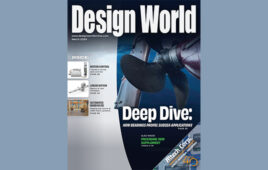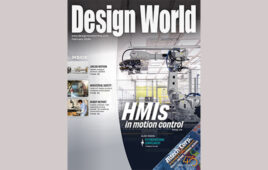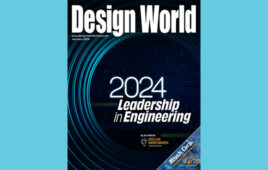In this issue:
76 Medical software development
56 Equivalent dynamic load and L10 life ratings for linear-motion setups
64 Designing with pneumatic clutches and brakes
86 LEDs light up industrial enclosures
Plan for vanishing jobs now
 Disappearing jobs isn’t a new thing. With the passage of time, jobs that were once steady, dependable employment can simply vanish, from phone operators to meter readers to ditch diggers. Society as a whole benefits from new advances in technology—but the people who held these positions are often left behind.
Disappearing jobs isn’t a new thing. With the passage of time, jobs that were once steady, dependable employment can simply vanish, from phone operators to meter readers to ditch diggers. Society as a whole benefits from new advances in technology—but the people who held these positions are often left behind.
We’ve seen this happen in manufacturing over the past few decades as automation, robotics and even efficiency practices made many blue collar jobs die out. Politically charged arguments rage over whether the Democrats or Republicans are to blame, but the reality of globalization and progress would have doomed these jobs eventually, no matter who was in charge.
Similarly, the maritime industry has seen a job drain in many sectors, thanks to the improvements from containerization. Thousands of warehouse workers and deck hands were no longer needed at ports across the country (and the world), not to mention the reduction in jobs from tugboat captain to longshoremen as the ships themselves grew larger in scale but fewer in number. Ahh, efficiency.
I worry that our leaders are not focused on the next big wave of job losses that’s coming in the near future. And it’s right in front of us on a nearly daily basis: driverless vehicles. The media loves to focus on the technology of driverless cars, but as gee-whiz as it is, and as much as it will save lives and increase efficiency, it will also eliminate jobs. Think of the massive amount of people who’ve found part- or full-time work as Uber drivers. What about occupations as varied as city bus drivers, long haul truckers, or ambulance drivers? What about the number of vehicles made? Will that decrease, further reducing employment in automotive applications?
I’ve read estimates that as many as 3 million jobs will be eliminated as a result of driverless technology in the coming decades. The time to worry about that (and how we train workers for other positions) isn’t when a magic billboard somewhere hits the number 3,000,000 and a nearby politician stands up and starts shouting. We need action—and a real plan now.
Manufacturing executives whom I speak with are constantly talking about a skills gap in our country. They tell me that there aren’t enough qualified people to operate their machine tools or repair their welding robots. They wonder where they’re going to find the help to allow them to keep expanding their operations.
Maybe it’s time to put together a cohesive plan to train those in driving-related careers as our manufacturing experts of tomorrow. I’m not interested in stopping technology’s march, but we’d be fools not to plan for its side effects. I don’t think that politicians can help us here—but who’s going to stand up and take this on? Individual communities? Manufacturers themselves? Industry trade groups? We’re waiting, and time is ticking …
Filed Under: DIGITAL ISSUES • DESIGN WORLD





Tell Us What You Think!